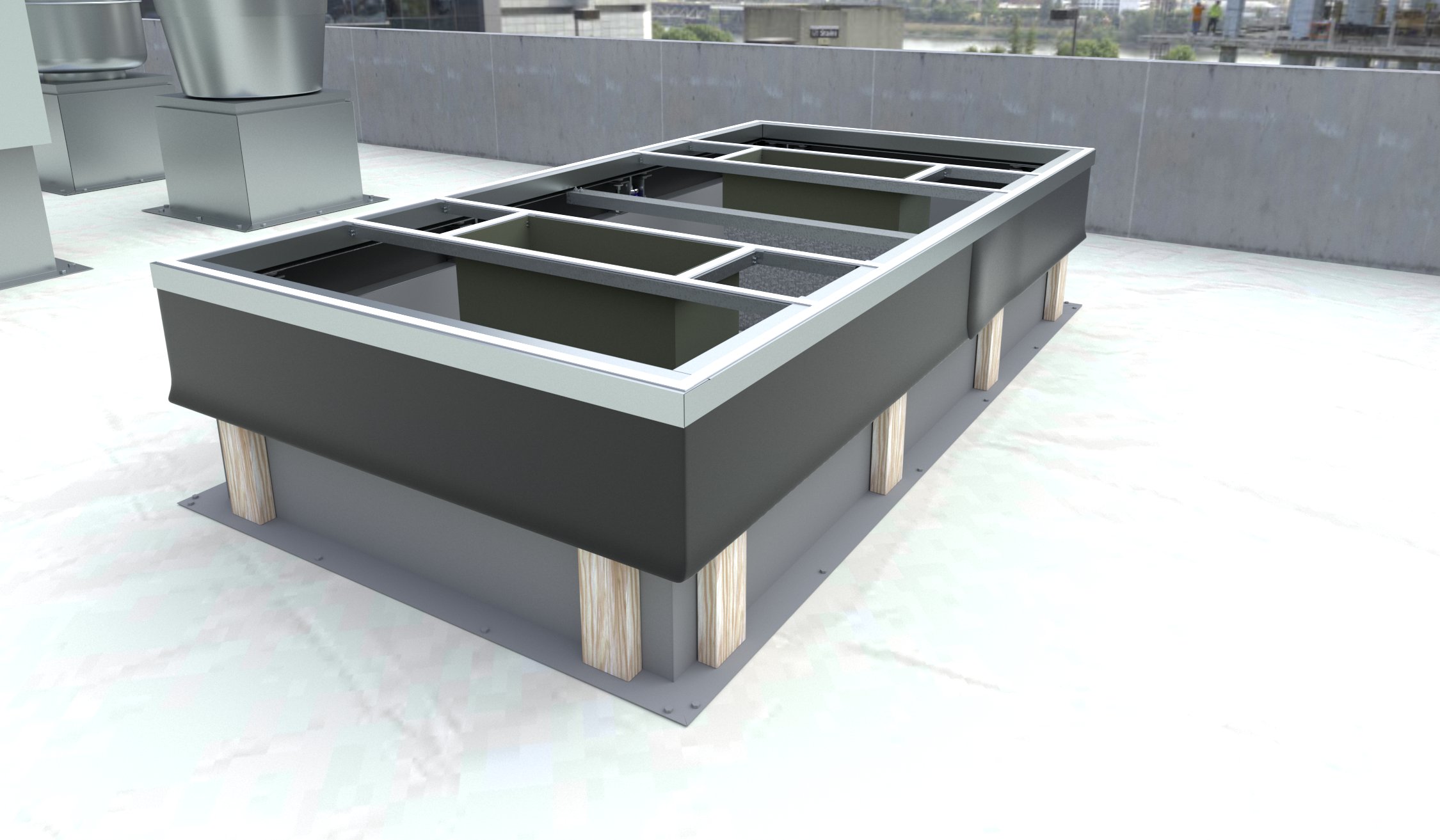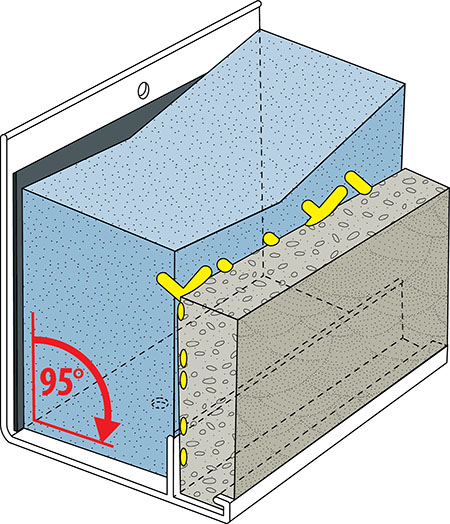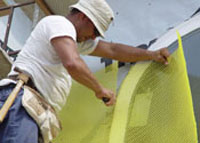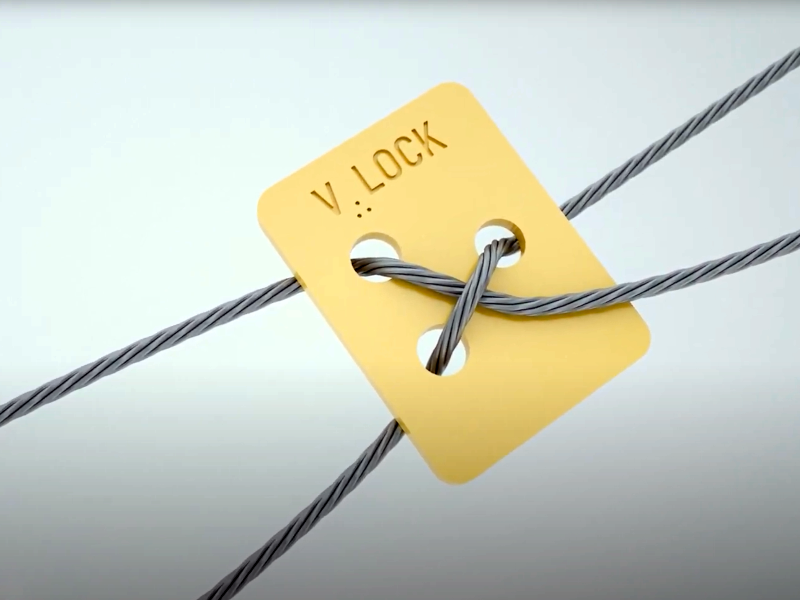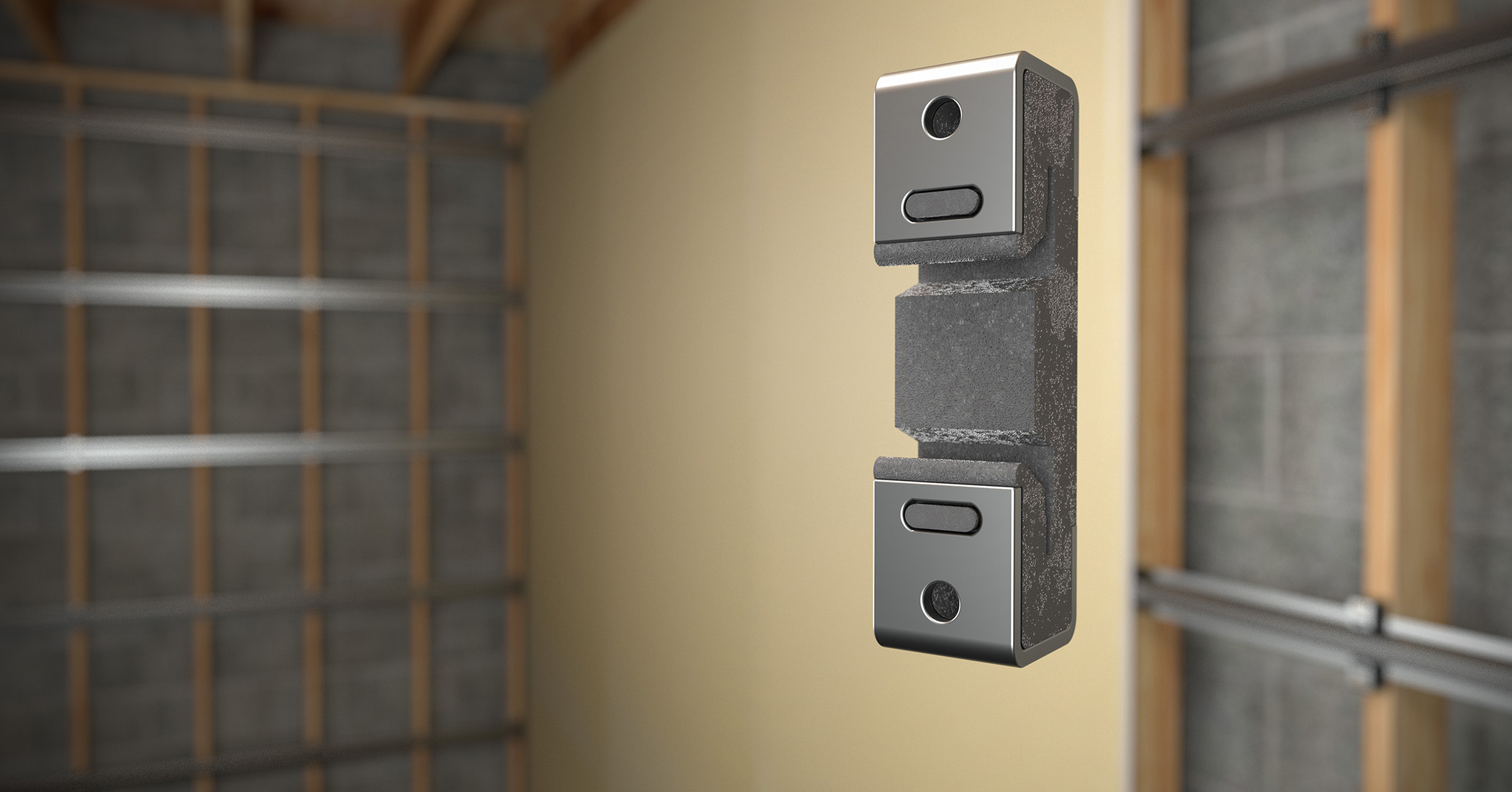Securing the future: Electrification of doors and hardware
By Justin Hendricks, FDAI

When checking into almost any hotel room today, guests will unlikely receive a traditional key. Instead, they will encounter a sleek, secure, and technologically advanced solution: electronic access control (EAC). Over the past few decades, electrified hardware and doors have revolutionized how buildings are secured and accessed, from hotels and hospitals to office spaces and apartment complexes.
These systems combine convenience with cutting-edge security, reshaping how people interact with their surroundings. By bridging the gap between physical infrastructure and digital solutions, electrified hardware is driving the future of efficient and secure building management.
For architects, specifiers, and manufacturers, the widespread adoption of electrified door hardware presents both opportunities and challenges. The demand for secure and scalable solutions requires industry professionals to stay informed on emerging trends, fire protection standards, and product certification requirements. As safety and security needs evolve, manufacturers are creating solutions that meet stricter fire protection and access control requirements while prioritizing reliability and ease of use. Certifications and third-party testing play a key role in validating product performance, giving architects and specifiers confidence that these solutions align with industry standards and real-world demands.
Advancements in electrified hardware
The transition from traditional mechanical locks to electronic access control has been rapid and transformative. Early implementations, such as magnetic badges, simplified access while enhancing security. Over time, technological advancements have led to more innovative and interconnected systems, integrating multiple components such as card readers, electrified locks, and cloud-based management platforms.
Modern electrified hardware includes encryption protocols to protect sensitive data, tamper detection mechanisms to alert managers to potential breaches, intrusion alarms for real-time notifications, and cloud integration for remote management and scalability.

Understanding electronic access control (EAC) systems
EAC systems have evolved into comprehensive solutions integrating hardware, software, and networking. Managing and monitoring access remotely is critical for businesses seeking more security and operational efficiency. EAC systems consist of the following components:
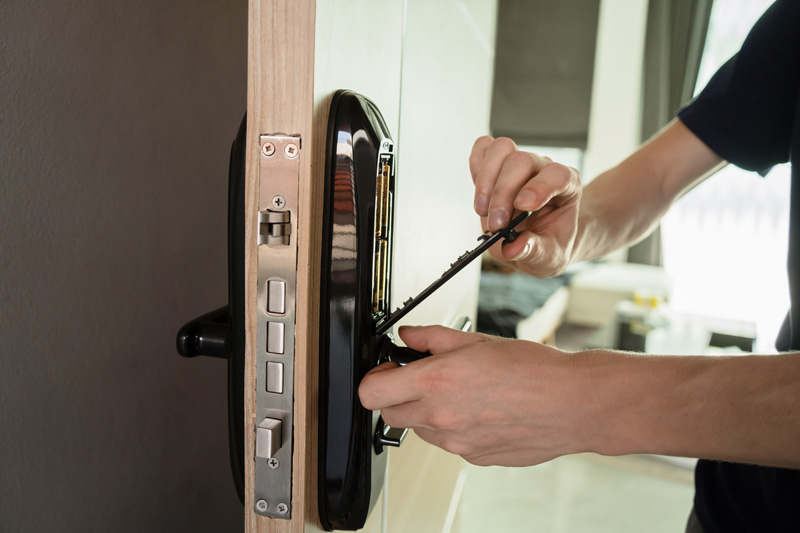
- Credential readers—Devices that scan and authenticate access credentials, such as cards, fobs, or biometrics.
- Control panels—The central hub that connects credential readers to electrified hardware.
- Software platforms—Cloud-based or on-premise solutions for configuring access permissions, monitoring activity, fire alarm integration, and generating reports.
- Hardware—Electric strikes, wiring, interconnected locks, magnetic hold open devices, fail-safe/secure protocols.
Integrating these elements has created opportunities for project teams to collaborate on seamless, secure building designs. As these systems evolve and advance, compatibility and integration with building management software have become the key factors for enhancing operational effectiveness.
Industry applications for electrified hardware
Hotels
Hotels have been leading the way in adopting EAC, using radio frequency identification (RFID) keycards, smartphone apps, and encrypted credentials to provide guests with secure and seamless room access. These systems allow real-time updates, making it easier for hotels to accommodate last-minute changes, late check-outs, or early arrivals without the hassle of reissuing physical keys.
Beyond convenience, many hotels are now integrating EAC with mobile apps and loyalty programs, allowing guests to check in, unlock their rooms, and access amenities, all from their smartphones. This connection to rewards accounts adds a personalized touch, granting VIP guests exclusive access to premium areas and services.
Hotels are also exploring biometric authentication for high-security areas and VIP experiences, offering frictionless and secure access tailored to individual guests. These innovations go beyond improving security. They create a smoother, more enjoyable stay, giving guests the flexibility and control they expect while helping hotels provide a more personalized and efficient hospitality experience.
Hospitals
In healthcare, where security and accessibility are critical, electrified doors secure sensitive areas such as operating rooms and pharmacies, integrate with staff credentials for quick access, and provide audit trails to ensure compliance. For example, controlled access ensures that only authorized personnel can access medication storage or restricted patient areas, maintaining safety and regulatory compliance. Hospitals also benefit from automated locking systems during emergencies, which increases patient and staff safety while adhering to fire code requirements.
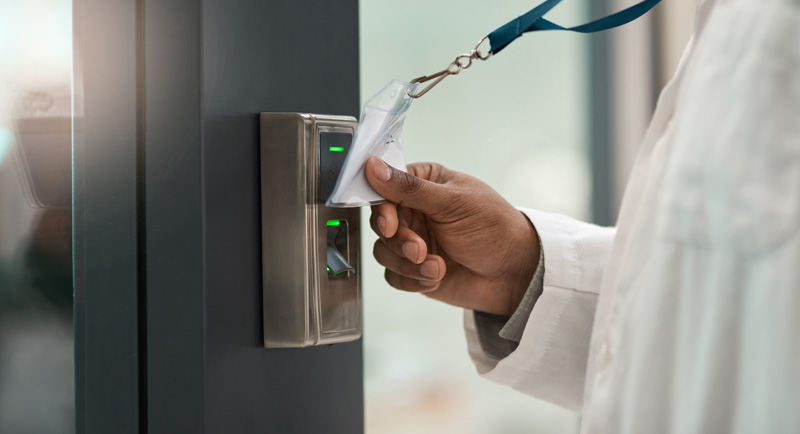
Office buildings
Office spaces benefit from customizable access permissions based on roles and schedules, remote access management for multi-location businesses, and integration with building management systems for enhanced energy efficiency. These features allow businesses to optimize security and streamline administrative tasks, such as onboarding and offboarding employees. Touchless entry systems are also gaining popularity in response to health and hygiene concerns, significantly enhancing user convenience.
Fire protection standards and egress requirements
Electrified hardware must effectively address security needs while prioritizing life safety. Fire protection standards, such as NFPA 101, Life Safety Code, and NFPA 80, Standard for Fire Doors and Other Opening Protectives, provide guidelines to ensure electrified systems comply with egress requirements. These standards emphasize the importance of routine inspections to verify compliance with fire safety codes and ongoing maintenance programs to ensure operational reliability.
Regular fire door inspections are crucial to complying with these standards. These inspections verify the functionality of electrified hardware and confirm that doors maintain their fire-protection rating, ensuring they operate as intended during emergencies. When labels are damaged or missing, certified field labeling programs can inspect and, if applicable, restore compliance, helping to prevent products from being disqualified during audits. Building owners should prioritize partnerships with certified inspectors to promptly address any issues, ensuring continuous adherence to safety requirements.
Key considerations
- Fail-safe versus fail-secure locks—Fail-safe locks unlock during power failures to provide safe egress, while fail-secure locks remain locked to prioritize security. The appropriate type depends on the specific building application and fire safety requirements.
- Panic hardware—Electrified panic hardware is often required for egress doors in public and high-occupancy buildings, ensuring compliance with life safety standards while maintaining controlled access.
- Delayed egress locks—These locks allow controlled access with a delay for emergencies and have audible alarms and signage per NFPA guidelines. These systems balance security and safety, providing a critical solution for retail spaces and hospitals.
Certification and testing requirements
Entering the electrified hardware market requires strict adherence to certification and testing standards. For manufacturers, having their products meet the latest certifications is a legal obligation and a crucial factor in market entry. Certification to updated standards is often required to gain approval from the authority having jurisdiction (AHJ). Without it, products may face delays or rejection during inspection, jeopardizing project timelines and budgets.
Field inspection programs confirm doors and hardware adhere to fire safety codes, even after modifications or repairs. Product certification and field inspection labels provide authorities with proof that products meet NFPA 80 requirements, reducing the likelihood of rejections during annual inspections. Having the most up-to-date certifications and proper labeling on all opening protective components reduces clients’ risk and liability, offering long-term peace of mind.
Everyone involved in bringing a project to life has an important role in understanding and applying the following certifications to make it a success:
- UL 294, access control systems—Evaluates performance under various conditions, including electrical interference and tampering. UL 294 certification ensures systems
operate reliably under stress, a crucial factor for high-security environments. - UL 10C, positive pressure fire tests—Certifies that doors and hardware withstand fire conditions, maintaining egress capabilities within the building during emergencies. Proper labeling of certified components simplifies compliance inspections and reduces liability risks.
- Federal Communications Commission (FCC) compliance—Verifies wireless components comply with electromagnetic compatibility standards. Compliance is vital for the safe integration of IoT-enabled devices, such as RFID readers and wireless locks.
- ANSI/BHMA standards—Define durability, strength, and finish criteria for door hardware. Examples include:
- ANSI/BHMA A156.3, Exit Devices
- ANSI/BHMA A156.25, Electrified Locking Systems
- Local and international codes—These include regional building codes and CE marking for the European Union, ensuring global applicability for manufacturers.
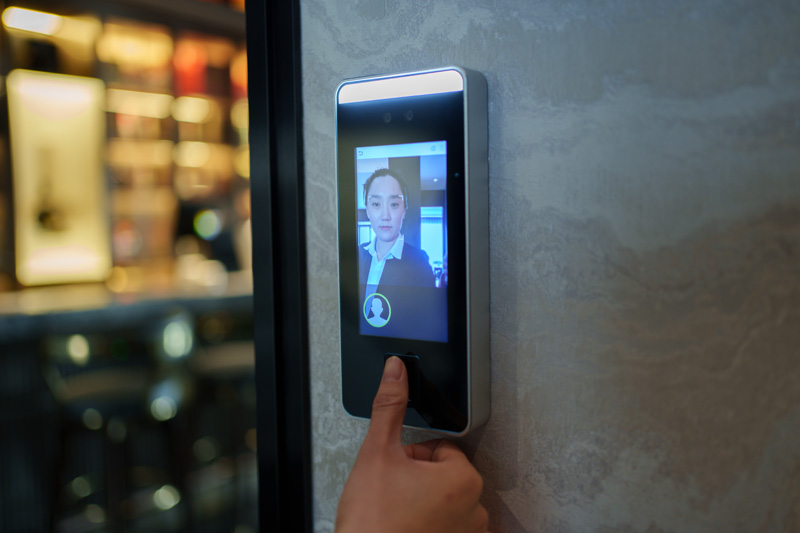
Reducing risk and liability
Proper certification and labeling are regulatory requirements and essential risk management tools as well. Compliant products minimize the likelihood of installation rejections by AHJs, legal liability during safety incidents, and operational disruptions. Specifiers, engineers, and architects play a crucial role by selecting certified products and partnering with manufacturers who prioritize compliance.
One significant advantage of compliance is the ability to avoid costly retrofits. Non-compliant installations can lead to delays, fines, and rework, which strain project budgets and timelines. Certified components provide peace of mind to all stakeholders by meeting legal and functional requirements right from the start. Clear documentation and labeling make it easier for facilities to pass routine inspections, reducing risks over time. This proactive approach builds confidence and strengthens industry partnerships among manufacturers, contractors, and clients.
Future trends in electrified hardware
As technology evolves, electrified doors and hardware are at the forefront of innovations that blend security, convenience, and sustainability. One of the most transformative trends is biometric access control, which uses fingerprints, facial recognition, or retinal scans to grant entry. These systems provide enhanced security by eliminating the risks associated with lost or stolen credentials, making them an ideal choice for high-security environments.
Mobile integration is another area of rapid growth. Smartphones are increasingly replacing physical credentials, allowing users to unlock doors and manage access through dedicated apps. This approach enhances user convenience and enables remote management capabilities, making it a scalable solution for businesses of all sizes. It also adds to the customer service experience and targets loyal customers. Additionally, mobile access improves the customer experience by offering seamless entry options and loyalty-based access privileges in hospitality, fitness, and corporate offices.
As the industry prioritizes sustainability, hardware design is shifting toward energy efficiency and eco-friendly materials. Low-energy systems and recyclable materials are aligning with green building initiatives, helping projects achieve LEED certifications and minimize their environmental footprint. Manufacturers now incorporate sustainable materials and energy-efficient components without compromising functionality or durability.
Battery technology advancements are further supporting the shift toward sustainable electrified hardware. Many wireless locks and access control devices are shifting to rechargeable lithium-ion batteries, which offer longer lifespans and lower environmental impact compared to traditional alkaline batteries. These improvements reduce maintenance needs and operating costs while improving system reliability. Additionally, battery backup solutions are becoming more advanced, allowing access control systems to remain operational even during power outages.
Artificial intelligence (AI) is also reshaping how different trades approach predictive maintenance and security, introducing smarter and more responsive solutions. AI-powered systems can monitor hardware performance, identify potential issues, and detect unusual activity, reducing downtime and preventing security breaches. Rather than relying solely on pre-programmed schedules, many modern systems integrate machine learning algorithms to analyze usage patterns and adjust settings dynamically based on real-time data. Some access control platforms incorporate anomaly detection and adaptive responses, enabling automatic security adjustments when detecting irregular activity.
While most manufacturers do not develop large language models (LLMs), they integrate AI-driven analytics through partnerships with cloud-based security platforms specializing in machine learning for predictive maintenance and access control. These systems continuously learn from data inputs, improving their ability to refine performance, strengthen security, and increase reliability. Further, seamless integration with smart building systems allows electrified hardware to work smoothly alongside other IoT devices, such as lighting, HVAC, and surveillance systems, creating unified and intelligent building management experiences.
Practical considerations for project teams
Successful integration of electrified hardware involves a coordinated effort across the entire project team, including specifiers, engineers, architects, and IT professionals. Each role plays a vital part in the project’s success. Specifiers identify the best products and technologies to meet project-specific needs; engineers address technical requirements such as power supply and network integration; architects ensure the hardware aligns with the building’s design and functionality; and IT professionals handle cybersecurity and system operations.
The process begins with conducting thorough site assessments to identify specific access control needs and potential challenges unique to the building’s design and intended use. These assessments help determine the most suitable products and technologies for the project. Another critical step is verifying the compatibility of new electrified hardware with existing systems. This includes assessing legacy equipment, network infrastructure, and software platforms to ensure seamless integration. Coordination with EAC integrators and IT teams is essential to address network requirements, resolve compatibility issues, and establish robust cybersecurity measures for connected devices.
In addition, project teams must review certifications and test reports to confirm compliance with applicable industry standards and codes. Integrating AI-driven verification tools presents an opportunity to automate compliance checks, reducing manual errors and improving efficiency. This step guarantees the reliability and performance of the selected hardware under various conditions while meeting legal requirements. Engaging with manufacturers who provide comprehensive training and support can further streamline the installation and maintenance process. Such partnerships empower teams to manage the hardware effectively and reduce the risk of operational disruptions.
By following these considerations, the project team can deliver solutions that are secure, compliant, and aligned with the client’s long-term goals, contributing to the overall success of electrified hardware projects.
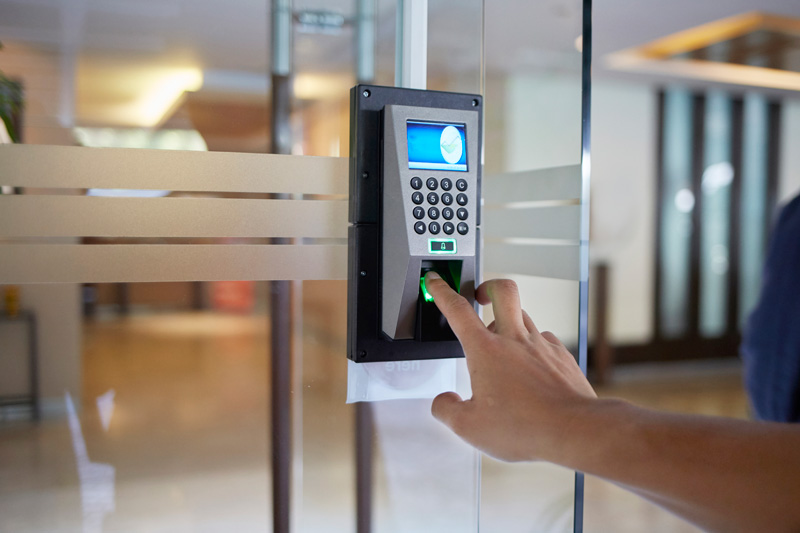
Conclusion
The electrification of doors and hardware has transformed the built environment, offering enhanced security, convenience, and compliance. For specifiers, engineers, and architects, a thorough understanding of the technical and regulatory aspects of these devices is necessary for delivering safe and efficient systems. By staying informed about trends, certifications, and standards, professionals can confidently navigate the complexities of electrified hardware and ensure their projects meet the highest levels of safety and functionality. With innovation driving the industry forward, electrified doors and hardware possibilities are exciting and limitless.
Author
Justin Hendricks, FDAI, is a technical manager in Intertek’s building and construction division. He brings extensive expertise in fire endurance testing and code compliance for building products, focusing on openings. His knowledge spans North American and European standards, ensuring comprehensive insight into global compliance requirements. Hendricks’ areas of expertise include manufacturing facility auditing, quality control program development, third-party product certification programs, and product evaluations through engineering analysis. In addition, he has contributed significantly to business development initiatives, supporting clients in navigating complex certification processes. His dedication to advancing safety and compliance makes him a respected leader in the building and construction industry.
Key Takeaways
The electrification of doors and hardware is reshaping the built environment, offering innovative solutions for enhanced security, convenience, and compliance. This transformative technology integrates electronic access control (EAC) systems with modern building management, meeting the demands of hotels, hospitals, and office spaces. Emerging trends, such as biometric access control, mobile integration, and AI-powered predictive maintenance, signal a promising future for electrified hardware. By staying informed and adopting a collaborative approach, project teams can successfully implement electrified solutions that align with safety and long-term client goals.




